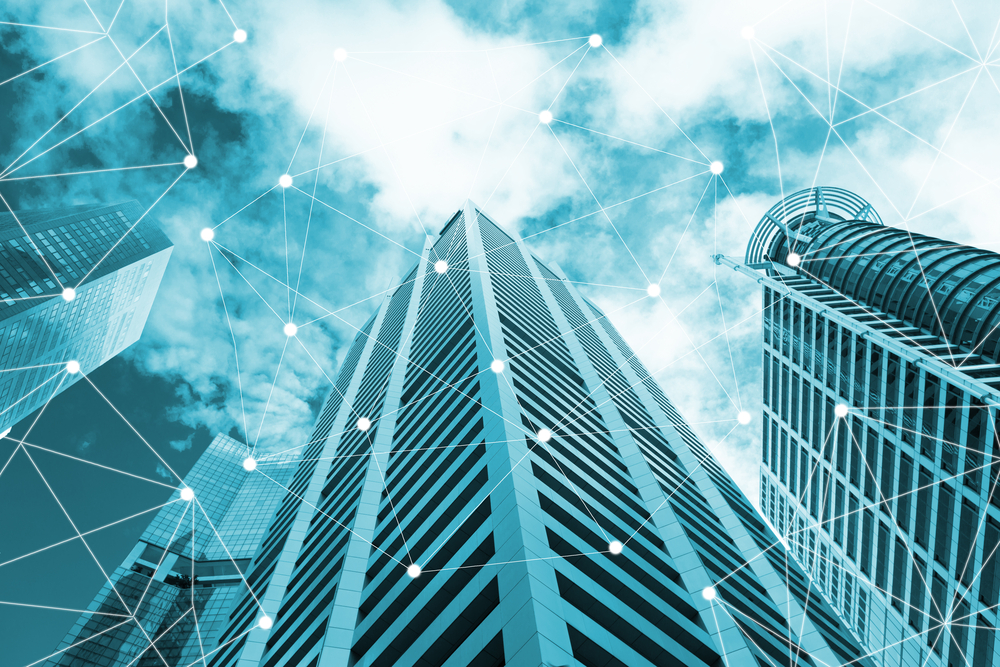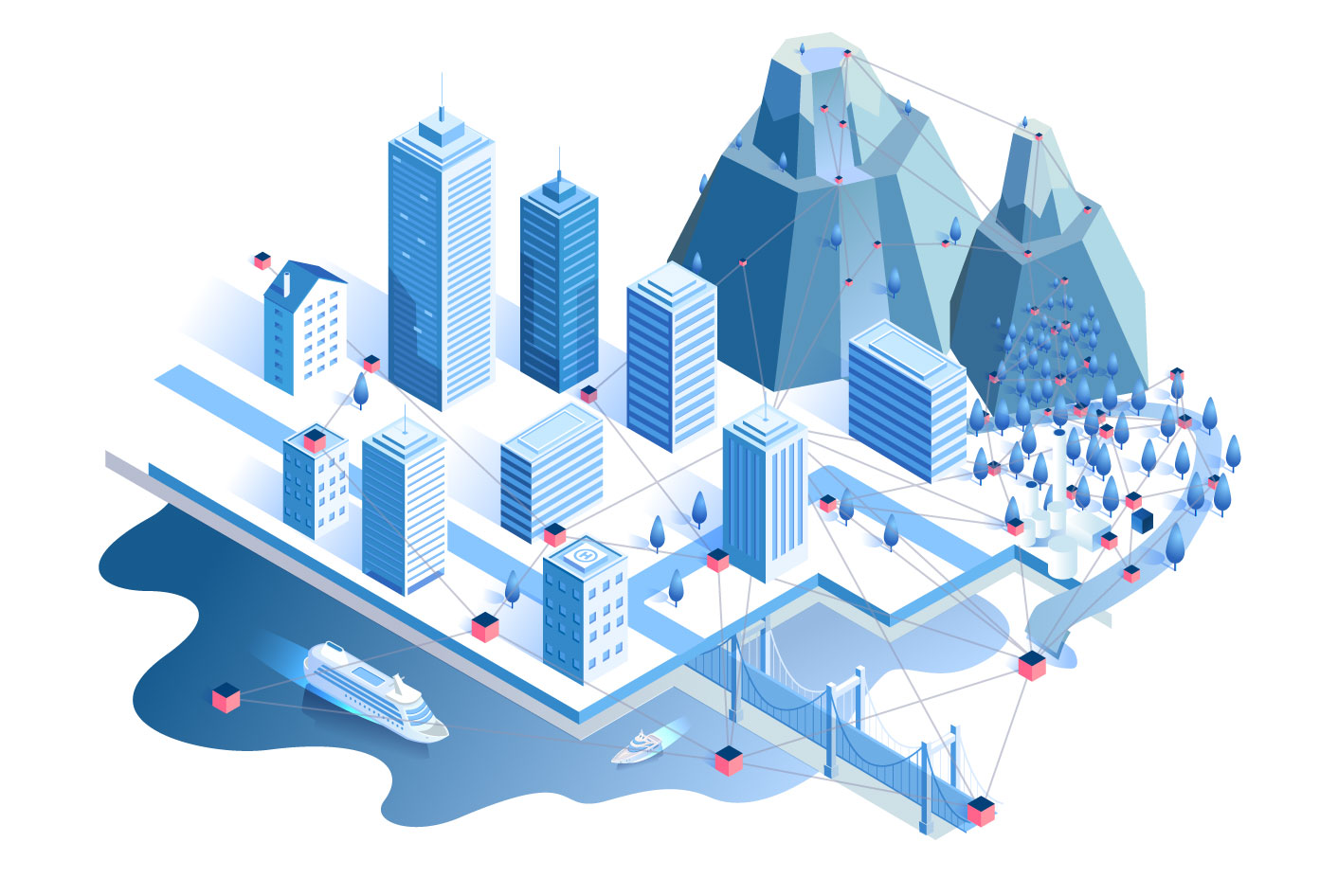
What is a smart city?
The purpose of a smart city is to collect data and improve the lives of citizens and visitors. They do this with the help of IoT sensors and technology to connect different components together.
The overarching mission of a smart city is to optimize city functions, drive economic growth, all while improving quality of life using smart technology and data analysis. After the data is collected and analyzed, the real value is taken in the form of action. What will the city do now that they have this information?
Factors that put the ‘smart’ in smart city
There are a few factors that are the basis for a smart city, which always leads back to three guiding principles that should be prioritized: quality of life, economic competitiveness, and sustainability.
The following factors as a starting point in order to develop a smart city.
- a technology-based infrastructure;
- environmental initiatives;
- a high functioning public transportation system;
- a confident sense of urban planning and
- humans to live and work within the city and utilize its resources.
Another point to mention is the relationship between the city and its government. How will a city adopt new sustainable practices without the help and approval from the government? It’s a two-way relationship that needs to be in place, and is a crucial aspect that needs to be considered before undertaking smart city initiatives. Everyone’s goals should be aligned – all parties should be on board with the technological developments, especially because all the work being done is happening with a third party, outside of the government, by the private sector.
Main sectors in a Smart City

Smart energy
One of the primary goals of smart cities is using less energy, both in residential buildings as well as commercial buildings. As we have mentioned before, data collection in a smart city is also taken into consideration in order to both analyze and help make future improvements.
One aspect that should be a focus is lighting, there’s no getting around it, we all use it everywhere we go. A few ways to incorporate smart lighting is by using LED lights, for example.
In a smart city, or any city for that matter, outdoor lighting provides its citizens with safe roads, inviting public areas, and provides additional security to their homes, businesses, and city centres. They are crucial elements of any city infrastructure. Unfortunately, according to different reports, street lighting is one of the biggest electrical energy consumers, accounting for about 40 % of the total energy consumption in cities (The European PPP Expertise Centre (EPEC) 2010; European Commission 2013; Mohamed 2013).
This shows that they are costly and contribute considerably to environment pollution. The production of electricity needed to power the street lighting systems significantly adds to carbon dioxide emissions (CO2, greenhouse gas) and nuclear dust. The costs of the electrical energy together with the environmental factors encourage municipalities to implement solutions to measure, analyse and reduce energy consumption in order to reduce spending and decrease maintenance costs (SungKwan Cho and Dhingra 2008; Li-jun et al. 2011).
Remote Lighting and Artificial Intelligence
Another extremely important smart city initiative is to implement remote control street lighting, combined with artificial intelligence to save on energy.
Monitoring and analyzing energy usage is a key aspect. Overall energy usage is also part of a smart city. “Many may have experienced this already with the installation of smart meters at their homes. But with the rise of home solar power systems and electric vehicles, hardware and software technology will allow for the potential of better grid management, optimization of power production through different sources and distributed energy production. Furthermore, buildings that monitor their energy usage actively and report this data to utilities can reduce their costs. This will ultimately lead to lower pollution and much better efficiency as cities become more urbanized,” said Herman Chandi, co-founder of CommunityLogiq.
Transportation
Another factor in a smart city is having a connected transportation system that works together, and assures easy mobility and safety.
These initiatives are put in place in order to tackle challenges such as improving commute times, increase safety for riders and pedestrians, and offering alternative options for transportation. Electric vehicles are also part of smart city initiatives in order to promote green alternatives.
Smart cities use technology to connect vehicles in order to avoid traffic accidents and improve traffic congestion by exchanging basic safety information such as location, speed, and direction between vehicles within range of each other.
Health
Smart cities focus on the health of its residents. How can they do this? By tackling the healthcare system within the city.
This means taking a look at the systemic, existing challenges in healthcare, such as access to healthcare, inefficient or ineffective use of emergency facilities and providing healthcare to remote areas.
There have been advancements in the health sector over the past few years, however, with the increasing population and urban lifestyle, it becomes critical to look after citizens in a more quick and efficient manner.
We have seen a shift in the last few years in relation to monitoring our own health. There has been an increasing demand of consumers to monitor their health by using wearable technology. This includes electronic devices that consumers can wear, like Fitbits and smartwatches, and are designed to collect the data of users’ personal health and exercise. US consumer use of wearables jumped from 9% in 2014 to 33% in 2018, according to Accenture.
For example, hospitals can use sensors to monitor air quality, a crucial aspect in the healthcare industry. In addition, a major evolution of IoT in healthcare is the use of electronic health records, which makes patient data more accessible in multiple locations.
Environment
Innovations help smart cities stay strong in the face of changing environmental, economic or political conditions.
With the increase of natural disasters, it’s always a good idea to stay prepared. Smart technology can help cities take a more proactive approach when it comes to unpredictable events.
For example, sensors in water can help cities better map floodplains. The data collected in sensors from other areas could be used to better predict where major fires are likely to happen – offering an opportunity for proactive prevention.
Other benefits of a smart city
Another way to optimize the way a city functions is gathering real-time public transit information and building automation systems. This can lead to fewer GHG emissions, better air quality, energy saving, leakage detection, and control can support water conservation, and waste management.
Technology used in a smart city
In order for a city to be ‘smart’, there needs to be a two-way communication. Using information and communication technology, the government and its citizens can work together to help build a community that fulfills the 3 components mentioned earlier: quality of life, economic competitiveness, and sustainability. These are a few examples of technology that would be used in a smart city.
Sensors
Sensors are a crucial component in a smart city, they are able to monitor a number of variables in different environments. These sensors will collect the required data and according to their readings, will act in accordance. There are a lot of options when it comes to sensors, it all depends on the goal. Some will monitor light, gas, pressure, temperature, humidity, and moisture, just to name a few.
Geospatial Technology
It’s crucial that a smart city have accurate, concise and detailed data to be able to function efficiently. There are a lot of opportunities to help improve the lives of citizens using geospatial technology. You can receive relevant data about traffic (roadworks, traffic jams, optimal routes), road infrastructure (signs, potholes, road damages), public health (hospital infrastructure, spreading of the diseases) or important community practices (citizen initiatives, projects, and cultural heritage) can be easily visualized, organized and interpreted using interactive web maps.
Final Thoughts
Although the smart city concept is nothing new, there are still many more initiatives a city can implement in order to qualify as a smart city. As we have seen, the primary goals always remain the same. This means increasing the quality of life of its citizens, remaining economically competitive, and putting in place sustainable practices.
Leave A Comment